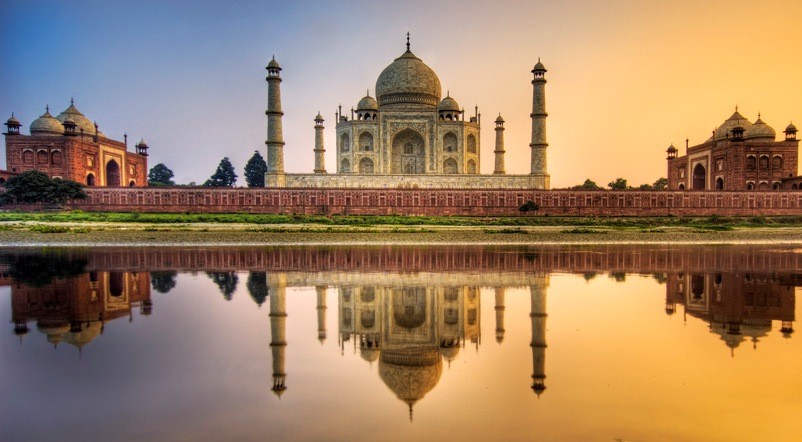Taj Mahal, one of the wonders of the world, is a white marble mausoleum located in Agra, India. Known for its excellent architecture, the tomb was built by the Mughal Emperor Shah Jahan for his beloved wife Mumtaz. While Rabindranath Tagore described it as “a teardrop on the cheek of eternity”, Rudyard Kipling called it “the embodiment of all the things pure”. Every year millions of tourists from all corners of the world pass through the gates of Taj Mahal to have a look at what symbolizes the epitome of eternal love.
History
In 1631 AD, Mumtaz Mahal, the third wife of Shah Jahan, died giving birth to their 14th child. The heartbroken emperor set towards making a memorial for his departed beloved, which would “make the sun and the moon shed tears from their eyes”. The construction began in 1632 and it took 20,000 workers and artisans toiled for 22 years to create the wonder that is Taj. The marble was brought from the mines in Makrana and precious gems were studded in its exquisite inlay.
The completion of Taj Mahal saw a decline in the fortunes of its creator. A war of succession followed and Shah Jahan was overthrown and jailed by his son Aurangazeb. He spent his last days interned in the Agra Fort, from where he could only get a glimpse of the Taj with his weakened eyes. After his death, Shah Jahan was buried alongside his wife in the Taj.
Overview
The Taj opens at 6:00 AM, so to beat the crowds, it is advisable to go early. There are three gates, the West, South and East gates and tickets can be bought at the South gate. From the South gate, the entry is through a massive red sandstone gateway adorned with verses of Quran. There are separate queues for men and women.
Once inside the Taj grounds, the visitor is greeted by beautiful gardens intersected by waterways and fountains. The Taj stands on a raised marble platform to the north of these gardens with the Yamuna river at its back. One the four corners of the platform are four high minarets which sort of complete the look of the monument. To the west is a mosque made in red sandstone and to the east lies Jawab, another identical building.
The Taj is made up of semi translucent white marble, covered with exquisite floral carvings in beautiful patterns. The decorations are inlaid with thousands of semi precious stones. Though centuries to loot and pillage has taken much of this wealth, some of it still remains for the present generations to look and marvel at. The monument is built in perfect symmetry. The four faces feature impressive arches called Pishtaqs, adorned with beautiful designs and calligraphy. Flower patterns, believed to represent the paradise are a common theme and the calligraphic designs are mostly verses from the Quran. The iconic Central dome topped by a brass Crescent represents the annals of heaven.
The inner sanctum of the Taj has the cenotaphs of Mumtaz and Shah Jahan, decorated with intricate inlay work. The Filigree screen surrounding the cenotaphs is a remarkable piece of craftsmanship. Through its intricate jaalis, it allows light to fall on them in beautiful patterns. The real tombs of the King and the Queen lie one level below the cenotaphs and are not open for public.
Taj Mahal During the Night
Taj Mahal can be viewed for five days, two days before and two days after the full moon, including the full moon night. For the sighting, the tickets have to be booked at least 24 hours in advance from the ASI Office at Mall Road, Agra. Tickets for night viewing are Rs 500 for Indians and Rs 750 for foreigners.

